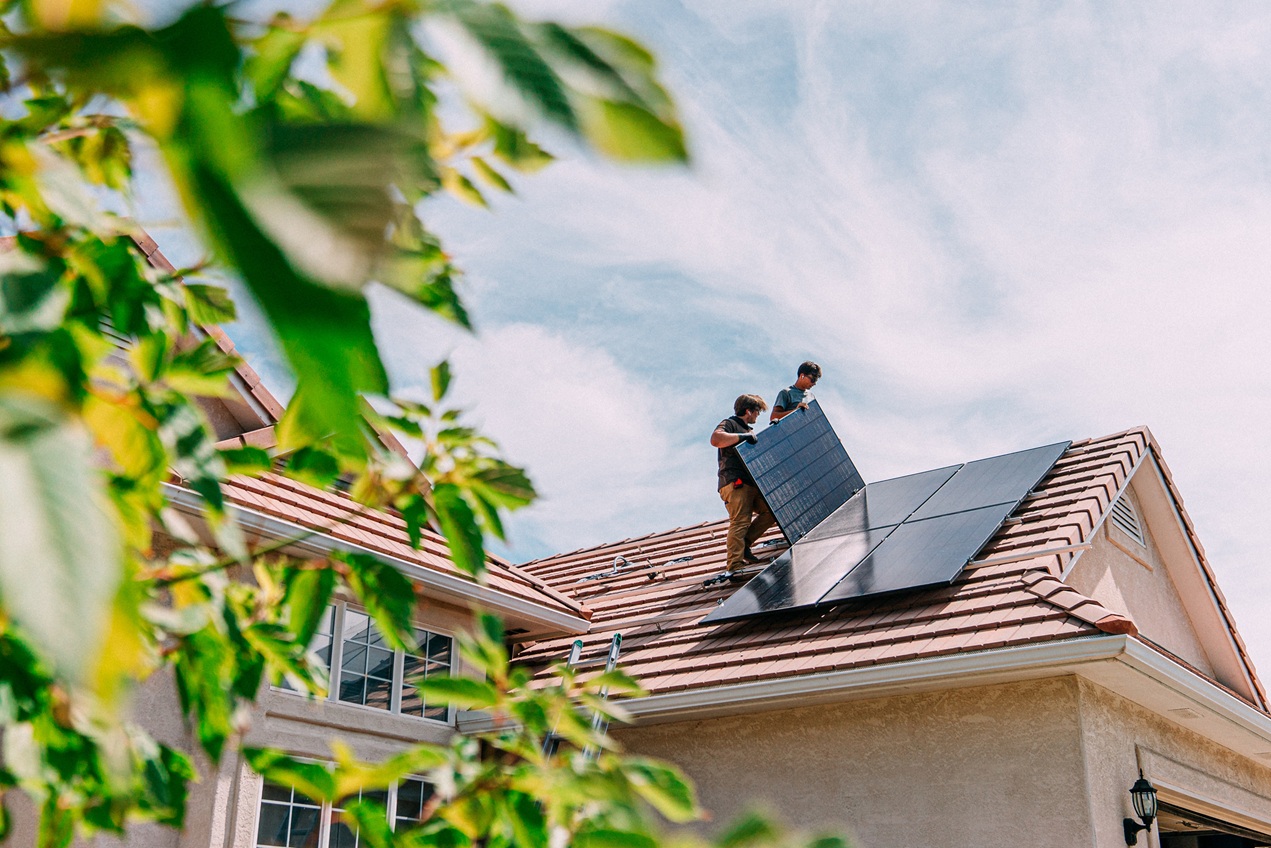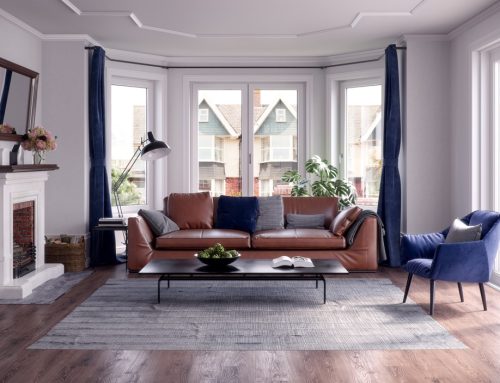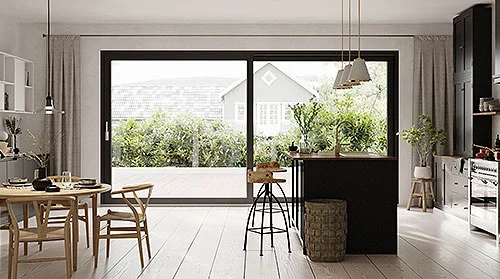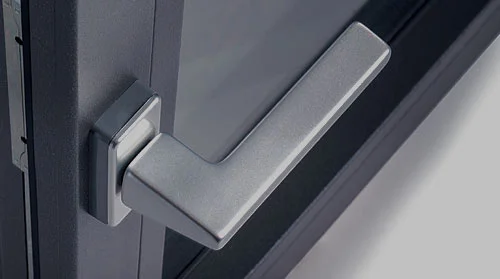Green building practices are reshaping the construction industry, with more developers embracing sustainable methods. This shift is easy to understand. With energy costs rising and a growing focus on reducing carbon footprints, people want homes that stay comfortable year-round without excessive energy use. When it comes to energy efficiency, windows play a crucial role in managing heat loss and indoor climate.
This brings European windows into the spotlight. Designed to meet rigorous standards, these windows blend style with some of the highest energy and thermal performance benchmarks in the world. But are they the ideal choice for green buildings? Let’s explore what makes European windows unique and see if they’re as sustainable as they’re reputed to be.
How European windows differ
In most homes, you’ll often see double-hung or single-hung windows. These are the classics: you slide them up and down to open. With double-hung windows, both the upper and lower sections can move, while single-hung windows keep the top part fixed. It’s a familiar, straightforward design that’s been a staple for generations.
European windows, however, take a different approach. The star of the show is the Tilt and Turn window, often considered the “Swiss Army knife” of windows. With a simple turn of the handle, you can tilt the top inward for gentle ventilation or swing the entire window open like a door. This design gives you more control over airflow, and it also makes cleaning easier, allowing access to both sides from inside.
The Tilt And Turn technology
But the differences go beyond just how they open. European windows are engineered with energy efficiency in mind. While most traditional windows rely on double-pane glass and basic weather stripping, European models often use triple-pane glass and frames with multiple air chambers. These features can reduce heat loss by up to 80% compared to standard designs—a significant impact on energy bills.
The installation process also differs. Traditional windows are typically nailed directly into the wall, a simple and quick method. European windows, on the other hand, are installed using a more intricate perimeter attachment system. Although trickier to install, this method creates an airtight seal that locks in heating and cooling, improving overall efficiency.

What about the price of European windows?
When it comes to cost, several factors come into play, such as the installation method, materials, and glazing options. For those choosing a complete window package—whether for a new build or a renovation project—the process can feel complex. That’s where OKNOPLAST’s expertise comes in. Visiting one of our many OKNOPLAST dealers gives you access to our knowledgeable consultants, who can guide you through selecting the best options for your home. They’ll provide tailored insights into available features, materials, and pricing to help you make the most informed decision.
Sustainable European windows
The European Union takes window standards seriously, setting strict regulations that manufacturers must follow to sell their products in the EU. Many of these requirements are driven by the EU’s “Fit for 2055” initiative, a framework focused on reducing Europe’s carbon footprint across various sectors. These aren’t just suggestions; they’re mandatory guidelines that push companies like OKNOPLAST to continually innovate, especially in creating highly efficient glazing packages.
But what exactly makes a window energy efficient? The key measure is the U-value. It indicates how well a window prevents heat from escaping a building, measuring how much heat passes through one square meter of glass for every one-degree temperature difference between the inside and outside.
Here’s the important part: when it comes to U-values, lower numbers mean better performance. European companies have perfected the manufacturing process to get as low U-value as possible. For regular vertical windows, the standard U-value must be 0.9 W/(m²·K) or lower, while roof windows need to achieve 1.1 W/(m²·K) or lower.
To put this in perspective, these aren’t just “best-in-class” numbers—they’re the minimum standards for selling windows in Europe. Every window, from the most basic models to the most advanced, must meet these thresholds. This means that even standard European windows are engineered to deliver exceptional thermal performance.
Introducing OKNOPLAST window systems
At OKNOPLAST, our goal is to create windows that go beyond meeting energy efficiency standards—they set a new benchmark. Our MIRU EVO STANDARD is a great example of this mindset. Crafted from high-grade aluminum, this system delivers exceptional durability while combining modern aesthetics with advanced insulation. It’s designed for projects where energy savings and lasting performance are top priorities.
Key Features of the MIRU EVO STANDARD:
- Robust Construction:
- Frame and sash height: 4.43 inches
- Frame with sash depth: 3.31 inches
- Frame installation depth: 2.95 inches
- Built to withstand strong winds and support large window installations
- Thermal Performance:
- Triple seal system for enhanced insulation
- Integrated nailing fin with pre-drilled mounting holes for precise installation
- Optimized to improve energy efficiency and reduce heat loss
- Aesthetic Options:
- Available in a wide range of RAL colors
- Textured finishes that mimic luxury wood, offering choices like walnut, mahogany, winchester, and golden oak
- Blends the warmth of wood with the durability of aluminum for a versatile, stylish look
Each of these features is carefully designed to ensure the MIRU EVO STANDARD offers both outstanding performance and a tailored aesthetic for any home.
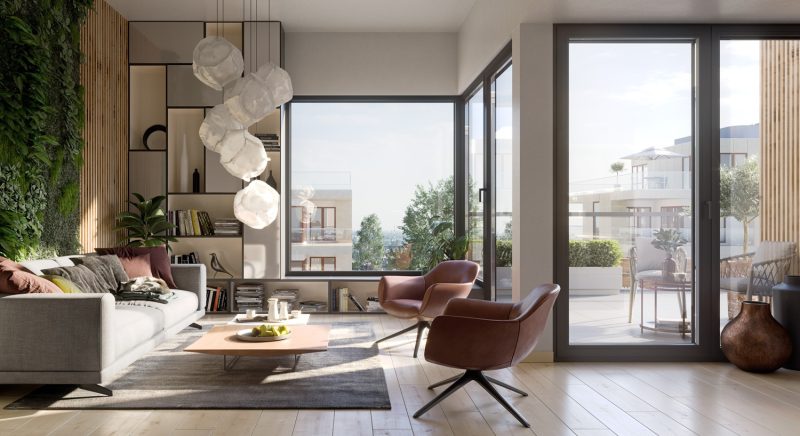
Sustainable window production at OKNOPLAST
At OKNOPLAST, we believe that energy efficiency doesn’t stop at the finished product—how we manufacture our windows matters just as much. That’s why we’ve invested in making our production process as eco-friendly as possible, from frame construction to the final glazing package.
One of our most impactful initiatives is our state-of-the-art catalytic converter furnace—an investment that has significantly reduced our environmental footprint. This advanced furnace operates at 400°C, targeting one of the biggest challenges in window manufacturing: volatile organic compounds (VOCs). By burning these compounds at high temperatures, we’re able to eliminate up to 95% of potential pollutants, releasing almost pure steam instead of harmful emissions.

Key Sustainable Features of OKNOPLAST’s Production Process:
- Catalytic Converter Furnace:
- Installed in the profile film-wrapping department, which previously accounted for around 80% of our plant’s emissions.
- Operates at 400°C to incinerate VOCs, reducing pollutant output by 95%.
- Releases clean steam instead of harmful gases.
- Solar Energy Integration:
- Partially powers the catalytic furnace using solar energy from PV panels on our facility’s rooftops.
- Offsets energy requirements and further reduces the carbon footprint of our operations.
- Enhanced Sealing Processes:
- Improved airtight sealing in the production process to prevent any potential release of chemicals into the atmosphere.
- Ensures a safer, more environmentally sound production environment.
As our Chief Operations Officer, Maciej Solecki, explains, “We’re seeing growing expectations from our customers not just for high-quality products but for environmentally responsible manufacturing methods too. Every project we undertake at OKNOPLAST is designed to improve production efficiency while minimizing environmental impact.”
Should you choose European windows?
European windows offer exceptional energy efficiency and durability, making them an ideal choice for new homes focused on sustainability. With OKNOPLAST’s extensive range of customization options, these windows can be tailored to fit both contemporary and traditional architectural styles. From advanced thermal performance to unique design choices, OKNOPLAST windows are crafted to enhance any home while reducing environmental impact.
Continue Reading
Products.
